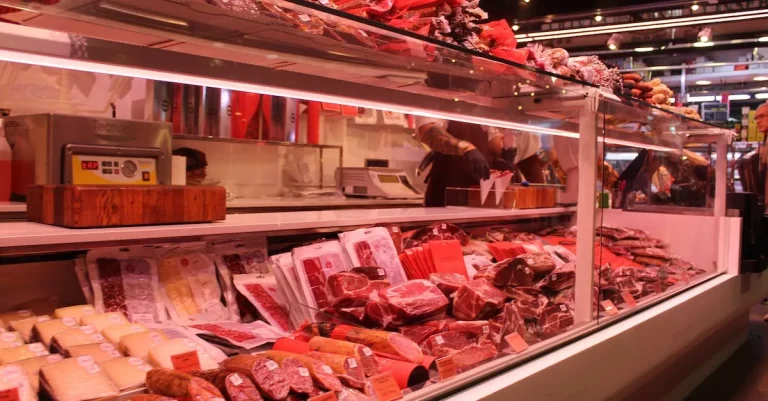Can You Buy Cat Food With Ebt? Snap Eligibility Explained
Owning a pet while receiving SNAP benefits leads many to ask: can I use my EBT card to buy cat food? This is an important question for low-income cat owners needing to feed their furry companions.
If you’re short on time, here’s a quick answer to your question: No, cat food cannot be purchased with SNAP EBT benefits. Only eligible human food items are permitted.
In this comprehensive guide, we will delve into the SNAP rules around pet food purchases. We’ll explain why cat food is not EBT-eligible, discuss food assistance options for pets, and provide tips for affording cat food on a tight budget.
EBT Rules: Why Cat Food is Not Allowed
SNAP benefits can only be used to purchase food for eligible household members
EBT (Electronic Benefit Transfer) is a system used by the Supplemental Nutrition Assistance Program (SNAP) to provide eligible individuals and families with funds to purchase essential food items.
However, it is important to note that SNAP benefits can only be used to purchase food for eligible household members. This means that the benefits cannot be used to buy items for pets, such as cat food.
Cat food, dog food, bird seed, etc. are not considered human food items
The reason why cat food is not allowed to be purchased with EBT is because it falls under the category of non-human food items.
SNAP benefits are specifically designed to assist low-income individuals and families in purchasing food items that meet their nutritional needs.
Therefore, items such as cat food, dog food, bird seed, and other pet-related products are not considered essential human food items and are not eligible for purchase using EBT.
Purchasing pet food with EBT is considered misuse of benefits
Using SNAP benefits to purchase pet food is considered a misuse of benefits. The program is intended to help individuals and families afford nutritious food for themselves, not for their pets.
Misusing benefits in this way can result in penalties, including the suspension or termination of SNAP benefits.
States have the right to enforce bans on pet food purchases
While the federal government sets guidelines for SNAP eligibility and benefit usage, states have the flexibility to implement additional restrictions or regulations. Some states have chosen to enforce bans on the purchase of pet food with EBT to ensure that the benefits are used appropriately and solely for the benefit of eligible household members.
For more information on SNAP eligibility and benefit usage, you can visit the official website of the U.S. Department of Agriculture’s Food and Nutrition Service.
Pet Food Assistance Programs
For many individuals and families who rely on SNAP benefits (Supplemental Nutrition Assistance Program), providing food for their pets can be a challenge. However, there are several pet food assistance programs available to help alleviate this burden.
These programs aim to ensure that pets are well-nourished and cared for, recognizing the important role they play in the lives of their owners.
Pet Food Pantries: Provide Free Pet Food and Supplies to Owners in Need
Pet food pantries are a valuable resource for individuals and families facing financial difficulties. These organizations collect donations of pet food and supplies and distribute them to those in need.
By offering free pet food, these pantries help pet owners keep their furry friends healthy and happy. Some pet food pantries also provide additional supplies such as toys, treats, and even veterinary care vouchers.
Pet Food Stamps: Special Certification to Get Discounted Pet Food
Pet food stamps programs are designed to assist low-income individuals and families in purchasing pet food at a discounted price. These programs typically require applicants to meet certain income criteria and provide proof of eligibility.
Once approved, participants receive a special certification card that can be used at participating pet food retailers to purchase pet food at a reduced cost. This innovative program helps ensure that pets receive the nutrition they need without putting a strain on the owner’s budget.
Food Bank Pet Programs: Some Offer Pet Food Along with Human Food
Many food banks and food assistance programs recognize the importance of pets in their clients’ lives and now offer pet food alongside human food. These programs understand that pets are part of the family and aim to support the overall well-being of both the owners and their furry companions.
By including pet food in their distributions, food banks alleviate the financial burden of pet ownership while promoting the health and happiness of pets.
Nonprofit Pet Grants: Temporary Funds to Cover Pet Care Costs
Nonprofit organizations often provide temporary financial assistance to help individuals cover pet care costs during times of hardship. These grants can be used to purchase pet food, pay for veterinary care, or even cover the cost of temporary pet boarding.
By offering this support, nonprofits ensure that pets can stay with their owners during difficult times and prevent them from being surrendered to shelters.
It’s important to note that eligibility requirements and availability of these pet food assistance programs may vary by location. To find out more about the specific programs available in your area, consider contacting local animal shelters, food banks, or visiting websites such as the Humane Society of the United States or the American Society for the Prevention of Cruelty to Animals.
Getting Low-Cost Cat Food on a Budget
Feeding your beloved feline companion shouldn’t break the bank. With a little bit of planning and resourcefulness, you can find affordable cat food options that fit within your budget. Here are some tips to help you get low-cost cat food:
Buy store brands, generic, and bulk sizes to save money
When shopping for cat food, consider purchasing store brands or generic options. These products often offer similar nutritional profiles to name brands but at a lower price point.
Buying cat food in bulk can also be a cost-effective option. By purchasing larger quantities, you can take advantage of bulk discounts and reduce the cost per serving. Just make sure to check the expiration dates to ensure the food remains fresh.
Check for pet food coupons and neighborhood sale listings
Keep an eye out for coupons and discounts on cat food. Many pet food companies offer coupons on their websites or through email newsletters.
Additionally, local pet stores or supermarkets may have weekly sales or promotions on cat food. Checking neighborhood sale listings, both online and offline, can also help you find discounted or gently used cat food options.
Sign up for loyalty programs and pet food company promotions
Consider signing up for loyalty programs offered by pet stores or pet food companies. These programs often provide exclusive discounts, rewards, and even free samples of cat food.
Additionally, pet food companies sometimes run promotions where they give away free or heavily discounted cat food to promote new products. By staying informed about these promotions, you can save money on cat food purchases.
Split costs with other pet owners when buying in bulk
If you have friends or family members who also own cats, consider pooling your resources and buying cat food in bulk together.
By splitting the cost, you can take advantage of the savings that come with buying in larger quantities. This can be especially beneficial if you don’t have ample storage space for bulk purchases.
Remember, providing your cat with nutritious food is essential for their health and well-being. While finding low-cost cat food options is important, always prioritize the quality and nutritional value of the food you choose.
Consult with your veterinarian to ensure you are meeting your cat’s dietary needs within your budget.
Making Your Own Cat Food at Home
If you are wondering whether you can use your EBT benefits to buy cat food, one option you might consider is making your own cat food at home. This can be a cost-effective and healthy alternative to store-bought cat food.
By making your own cat food, you can ensure that your furry friend is getting the nutrients they need while also saving money.
Research recipes for homemade cat food using EBT-eligible ingredients
When making your own cat food at home, it’s important to research recipes that use ingredients eligible for purchase with EBT benefits. There are many resources available online that provide recipes specifically designed for homemade cat food using affordable and EBT-eligible ingredients.
These recipes often include proteins such as chicken, eggs, tuna, and other affordable options.
Focus on affordable proteins like chicken, eggs, tuna, etc.
Proteins are an essential part of a cat’s diet, and luckily, there are many affordable options that can be purchased with EBT benefits. Chicken, eggs, tuna, and other lean meats can be used as a base for homemade cat food. These proteins provide the necessary amino acids that cats need to thrive.
By focusing on affordable proteins, you can ensure that your homemade cat food is both nutritious and budget-friendly.
Supplement with cat-safe fruits, veggies, grains
In addition to proteins, it’s important to supplement your homemade cat food with other nutritious ingredients. Cat-safe fruits, vegetables, and grains can provide additional vitamins, minerals, and fiber to your cat’s diet.
Some examples of cat-safe fruits and vegetables include carrots, peas, blueberries, and pumpkins. These ingredients can often be purchased with EBT benefits and can add variety and nutritional value to your homemade cat food.
Check with your vet before switching your cat’s diet
Before making any changes to your cat’s diet, it’s important to consult with your veterinarian. They can provide guidance on the specific nutritional needs of your cat and ensure that the homemade cat food you are preparing meets those needs.
Your vet can also advise you on any additional supplements that may be necessary to ensure your cat’s health and well-being.
Remember, while making your own cat food at home can be a great way to save money and provide a nutritious diet for your furry friend, it’s important to do your research and consult with your vet to ensure that you are meeting all of your cat’s dietary needs.
Being a Responsible Cat Owner on SNAP Benefits
As a responsible cat owner, it’s important to provide the best care for your feline companion, even if you’re on SNAP benefits. Here are some tips to help you navigate the challenges of pet ownership while on a limited budget.
Prioritize providing the best care for your pet
While you may be on a tight budget, it’s essential to prioritize your cat’s health and well-being. This includes ensuring they have access to nutritious food that meets their dietary needs.
While EBT benefits can’t be used to purchase pet food, there are other ways to obtain affordable cat food. Consider reaching out to local animal shelters or pet food banks in your area that may offer assistance to pet owners in need.
Additionally, some organizations offer discounted pet food programs or coupons that can help alleviate the financial burden of purchasing cat food.
Look into low-cost veterinary clinics in your area
Regular veterinary care is essential for your cat’s overall health. Look for low-cost veterinary clinics in your area that offer discounted services or have sliding-scale payment options. These clinics often provide vaccinations, check-ups, and basic medical care at a more affordable price.
Some clinics also offer spaying and neutering services at a reduced cost, which can help prevent unwanted litters and potential health issues for your cat in the future.
Ask about payment plans if emergency treatment is needed
Emergencies can happen unexpectedly, and it’s important to be prepared. If your cat requires emergency veterinary treatment and you’re unable to afford it upfront, don’t hesitate to ask about payment plans or financial assistance options.
Many veterinary clinics understand the financial constraints faced by pet owners and may offer flexible payment options or assistance programs. Exploring these options can help ensure your cat receives the necessary care while keeping your budget in mind.
Consider pet insurance for added financial protection
Pet insurance can provide additional financial protection for unexpected veterinary expenses. While it may require a monthly premium, having pet insurance can help offset the cost of routine check-ups, vaccinations, and even emergency treatments.
Before purchasing pet insurance, carefully review the coverage options, deductibles, and exclusions to ensure it aligns with your cat’s specific needs and your budget. Some websites, such as Pet Insurance, provide comparisons of different pet insurance plans, making it easier to find the right one for you.
Remember, being a responsible cat owner goes beyond providing food and medical care. It also involves giving your pet love, attention, and a safe environment to thrive in. With careful planning and resourcefulness, you can provide the best possible care for your cat, even while on SNAP benefits.
Other Ways to Get Cat Food for Free
While the Supplemental Nutrition Assistance Program (SNAP) does not typically cover pet food expenses, there are still ways to obtain cat food for free. Here are some alternative options:
Friends or family may donate extra pet supplies
If you are in need of cat food, don’t hesitate to reach out to friends or family members who may have extra supplies. They might be willing to donate some cat food to help you out. It’s always worth asking, and you never know how generous your loved ones can be.
Plus, it’s a great way to strengthen your bond with them and show them how much you appreciate their support.
Check free listings on Craigslist, Nextdoor, Buy Nothing groups
Online platforms like Craigslist, Nextdoor, and Buy Nothing groups can be valuable resources for finding free cat food. People often give away pet supplies they no longer need, and you may just stumble upon someone in your community who is looking to donate cat food.
Be sure to check these listings regularly and act quickly when you find a suitable offer.
Veterinarian offices may have cat food samples
When visiting your veterinarian, don’t hesitate to ask if they have any cat food samples available. Many pet food companies provide samples to veterinary offices to distribute to pet owners.
By taking advantage of these samples, you can provide your cat with some free meals and potentially discover new brands or flavors that your feline friend loves.
Rescue organizations sometimes assist with pet food costs
Rescue organizations are dedicated to helping animals and may offer assistance with pet food costs.
It’s worth reaching out to local rescue organizations in your area to inquire about any programs or resources they have available. They may have partnerships with pet food companies or access to donated cat food that they can provide to those in need.
Remember, these alternative options may vary in availability depending on your location and circumstances. It’s always a good idea to explore multiple avenues to increase your chances of finding free cat food.
Additionally, consider reaching out to local food banks or pet food pantries, as they may have programs in place to assist pet owners in need.
Conclusion
In summary, EBT cards cannot be used to purchase cat food or other pet supplies. While inconvenient, these SNAP restrictions are in place to ensure that benefits are used to feed household members.
Luckily, there are many ways to obtain discounted or free cat food through smart budgeting, assistance programs, and community resources.
With some creativity and planning, you can keep your feline friends fed while sticking to your SNAP budget.











